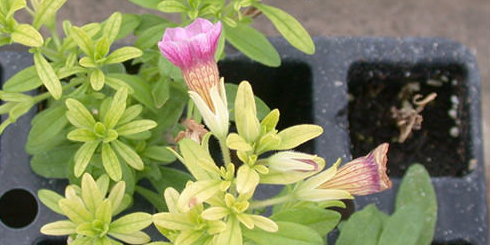
Petunias Info & Care
Often grown as annuals, petunias are one of the most popular flowers because of their long flowering period. As with most annuals, they get leggy by midsummer, so you’ll want to prune the shoots back to about half their length.
Pretty petunias are treated as annuals in most areas but also as tender perennials in Zones 9 to 11. The flowers come in many colors and patters, and bloom from spring until frost!
These colorful annuals can really add pop to a front lawn and often used as borders, containers, hanging baskets or even seasonal groundcover. Some even have a slight fragrance.
Height can vary from 6 inches to 18 inches. Spread can be from 18 inches to 4 feet.
Planting
- Petunias need full sun or they will become spindly. They don’t tend to flower in the shade.
- They are quite versatile, growing in different types of soil, but it is important that the soil drains well and doesn’t stay wet.
- It’s best to buy young plants from a nursery which often sells petunias in flats. Look for plants that are short and compact, not leggy and not yet blooming and they’ll settle in faster.
- Plant after the last spring frost in a place that is sheltered from wind exposure. Keep well watered.
- Space the plants about 1 foot apart.
- If you’re planting petunias in containers, use a soil-less mix.
Care
- Petunias are tolerant of heat so you don’t have to water them regularly. A thorough watering once a week should be sufficient (unless there are prolonged periods of drought in your area). Avoid watering shallowly as this encourages shallow roots. The spreading types of petunias and those in containers require more frequent watering.
- Fertilize petunias monthly with a balanced fertilizer to support their rapid growth and heavy blooming. Double-flowered cultivars like a biweekly dose of fertilizer.
Iron Deficiency
Are your petunia’s leaves losing their bright green color? Bringing back those lush green leaves is easy. All you need to do is add an iron supplement, like Bonide Liquid Iron. In two weeks you’ll have the prettiest petunias in your neighborhood.
To be sure your petunia has an iron deficiency (vs. overwatering, for example), look at the photo of the petunia below with chlorosis which stars at the root tips, but most often occurs throughout the entire plant.

Getting Leggy in Midsummer
- By midsummer, most petunias get leggy, producing blossoms at the tips of long, leafless stems. To keep petunias tidy and flowering, we prune the shoots back to about half their length. This will encourage more branching and flowers.
- After pruning, fertilize and water the plants well to force out new growth and flowers. The plants may look raggedy at first but they’ll rebound with more color and blooms.
- Older garden petunia plants can be pruned prune hard (within a few inches of the base) to re-encourage vigor, especially in cooler climates, but keep the remaining leaves.
- Also, remove faded, old, or dead blossoms to both improve blooms and attractiveness, especially for the larger-flowered petunias. Dead-heading prevents seed pods from competing for the plant’s food supplies. Clippings can be added to a compost pile to be recycled.
Common Pests & Diseases
Petunias have few serious insect or disease pests. Avoid wetting the foliage and flowers when watering to help prevent disease.
- Aphids
- Slugs
Information courtesy of Sue Adams and Almanac.com

 Adams Fairacre Farms
Adams Fairacre Farms